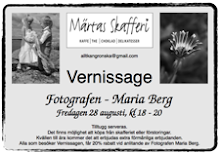Team fredag - rörelse
Birdfreak Kanadagås Branta canadensis Den första inplanteringen av kanadagås i norra Europa skedde i Storbritannien till James II, kungen av Englands samling av vattenfåglar i St. James Park i London under 1600-talet.
I Sverige inplanterades kanadagås, som bytesdjur, på initiativ av Bengt Berg (Inte släkt med mig!) omkring 1930 i Blekinge. Därifrån har den spridits sig till stora delar av Sverige, Norge, Finland och Danmark och sedan 1960-talet har den nordeuropeiska populationen haft en i det närmaste lavinartad expansion. Exempelvis häckade det första kanadagåsparet i Estland 1996.
Till skillnad från sina släktingar i Nordamerika har den nordeuropeiska populationen inte utvecklat någon specifik flyttrutt utan drar sig söderut på vad som verkar ett mer slumpartat vis. Många övervintrar i trakterna kring Danmark, Nederländerna, Polen. Vissa drar sig ner till Spanien och Italien och man har haft övervintrande kanadagås på Azorerna. På nordliga platser, där vattnet på konstgjord väg hålls öppet vintertid, är det vanligt att kanadagåsen övervintrar.
Många nordeuropeiska kanadagäss är halvtama och håller till i parker och dammar nära människor.
Kanadagåsen har också introducerats till Nya Zeeland och till några delar av Kina.
Kanadagåsen anses i många av de områden där den är introducerad vara ett skadedjur. Bland annat för att den äter upp växter och lämnar stora mängder spillning efter sig. Den anses också ha en negativ inverkan på populationer av andra gäss.
Wikipidia
_______________________________________________________
By the early 20th century, over-hunting and loss of habitat in the late 1800s and early 1900s had resulted in a serious decline in the numbers of this bird in its native range. The Giant Canada Goose subspecies was believed to be extinct in the 1950s until, in 1962, a small flock was discovered wintering in Rochester, Minnesota, by Harold Hanson of the Illinois Natural History Survey. With improved game laws and habitat recreation and preservation programs, their populations have recovered in most of their range, although some local populations, especially of the subspecies occidentalis, may still be declining.
In recent years, Canada Geese populations in some areas have grown substantially, so much so that many consider them pests (for their droppings, the bacteria in their droppings, noise and confrontational behavior). This problem is partially due to the removal of natural predators and an abundance of safe, man-made bodies of water (such as on golf courses, public parks and beaches, and in planned communities).
Canada Geese have reached northern Europe naturally, as has been proved by ringing recoveries - My photo is taklen a week ago in the south of Sweden close to the town Helsingborg.
Since 1999, The United States Department of Agriculture Wildlife Services agency has been engaged in lethal culls of Canada Geese primarily in urban or densely populated areas. The agency responds to municipalities or private land owners, such as golf courses, who find the geese obtrusive or object to their waste.[8] Addling goose eggs and destroying nests are promoted as humane population control methods.
A collision with a flock of migratory Canada Geese resulted in US Airways Flight 1549 suffering a total power loss after takeoff from LaGuardia Airport, New York City, New York on 15 January 2009. The pilot brought the plane to an emergency 'splash'-landing in the Hudson River causing only minor injuries to the 155 passengers and crew.
Geese have a tendency to defend against humans when they feel themselves or their goslings to be threatened. First the geese will stand erect, spread their wings and produce a hissing sound. Next, the geese will charge. They may then bite or attack with their wings.


